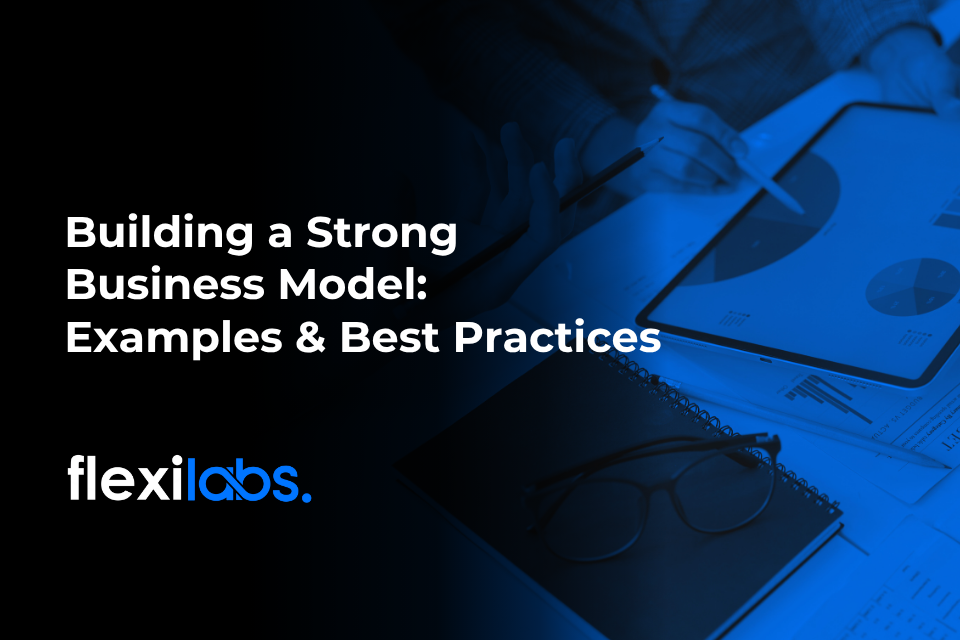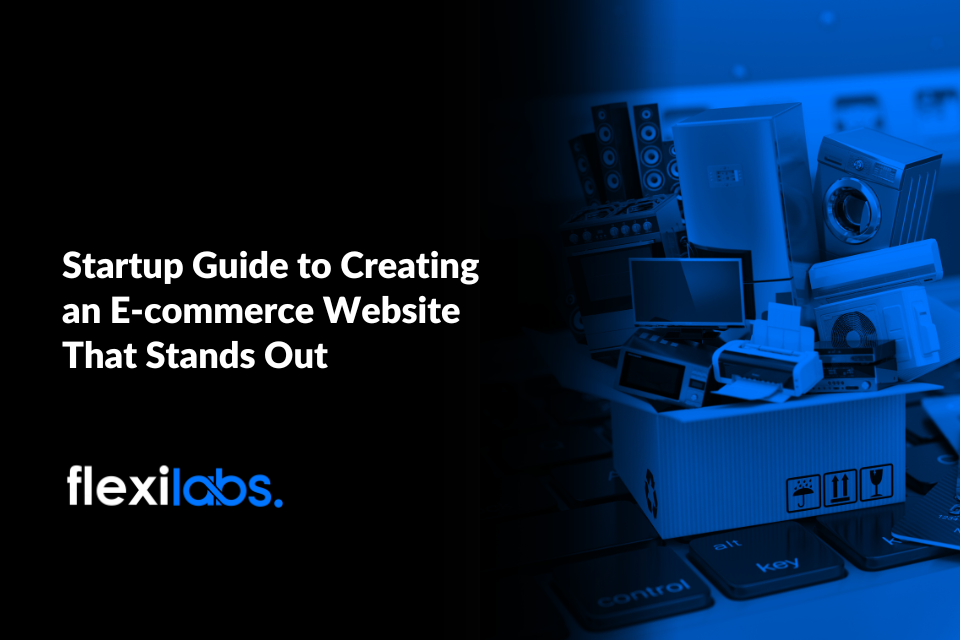Starting a business is an exciting venture, but ensuring its success requires a robust business model. A well-crafted business model outlines how your startup will create, deliver, and capture value, serving as the foundation for sustainable growth.
This article will guide you through understanding business models, their components, examples, and actionable best practices to strengthen your strategy.
What is a business model, and why is it important for startups?
A business model is a strategic framework that outlines how a company creates, delivers, and captures value. It serves as the foundation for how a business operates, detailing the processes, target customers, revenue streams, cost structures, and key partnerships required for success.
For startups, the importance of business model is impalpable. It is a tool that guides a startup’s journey from ideation to execution, helping it align with market demands and achieve long-term success. Likewise, it helps entrepreneurs align their goals, attract investors, and adapt to market demands.
Without one, businesses risk mismanaging resources, targeting the wrong audience, or failing to capitalise on opportunities.
Key Components of a Business Model for Startups
To build a strong business model, startups must address the following key components:
Value Proposition
At the core of every successful business model is the value proposition. This defines the unique value your product or service provides to customers. It explains why customers should choose your business over competitors and how your offering solves their problems or fulfills their needs.
When building a strong business model for startups, your value proposition is the promise of the unique value your company delivers to customers. It’s not just about what you offer but why it matters to your audience. Startups often succeed because they solve problems in innovative ways or address unmet needs in the market.
Customer segments
Customer segments refer to the distinct groups of people or organisations that a business targets with its products or services. In terms of a business model, defining customer segments involves identifying and categorising the customers who will derive the most value from the company’s offerings. Each segment represents a group with shared characteristics, needs, preferences, or behaviors. These can be based on demographics, psychographics, or business attributes.
For a startup business model, understanding and defining customer segments is critical to creating a targeted and successful business strategy. When startups know their customers’ needs and pain points, they can craft a tailored value proposition that resonates deeply with those segments.
Revenue streams
Revenue streams in a business model refer to the various sources through which a business generates income. It can come from multiple sources; understanding them is critical for financial planning and growth.
Likewise, revenue streams are important when building a strong startup business model. Revenue streams are the lifeblood of your company, defining how your business earns income. For example, a health-tech startup might monetise through a subscription-based app that offers personalised fitness plans and data analytics.
Cost structure
Cost structures are essential in building a strong business model. It refers to the framework that outlines all the costs a business incurs while operating. It identifies and categorises expenses into fixed and variable costs, helping the business understand its financial obligations.
Thus, startups must carefully manage costs to maximise runway and profitability. A well-defined cost structure helps identify fixed and variable costs while efficiently allocating resources.
Distribution channels
How you deliver your products or services to customers is another critical component of building a strong business model. Distribution channels can make or break your customer experience, so it’s essential to optimize them for efficiency and convenience.
For startups, leveraging cost-effective and scalable channels is crucial. Startups often leverage digital-first approaches like social media marketing, e-commerce platforms, or app marketplaces to reach audiences quickly.
Key partnerships and resources
A business rarely operates in isolation. Success often hinges on key partnerships and resources, which include the people, tools, and relationships that enable operations and innovation.
Startups often lack the extensive resources of established businesses, making partnerships and resource optimization vital for growth. Partnerships can provide startups with expertise, technology, or market access they might not achieve independently.
What are the four types of business models?
With that in mind, choosing the right business model is a critical decision for any startup. It determines how the business delivers value to customers, generates revenue, and sustains operations. Among the most widely used business models by startups are Subscription, Freemium, Marketplace, and Direct Sales.
Let’s take a closer look at each of these, including their benefits, challenges, and real-world examples.
Subscription
The subscription model involves offering products or services for a recurring fee, typically monthly or annually. A startup can adopt the business model to provide ongoing access to services and products. This can ensure steady cash flow while maintaining a focus on improving customer retention.
Why It Works for Startups
- Provides steady and recurring income.
- Builds long-term customer relationships.
- Allows businesses to forecast revenues and manage expenses effectively.
Examples
- Netflix: Offers unlimited streaming of movies and shows for a monthly fee. By continually adding fresh content, it retains subscribers.
- Birchbox: A beauty subscription box delivering curated products to customers monthly. It combines convenience with surprise to keep users engaged.
- Slack: Offers collaboration tools on a subscription basis, scaling pricing tiers to meet the needs of small teams to large enterprises.
Freemium
Freemium combines free and premium offerings. Users access basic features for free, with the option to pay for advanced features or functionality. This business model is popular among tech startups as it lowers barriers to entry and fosters rapid user acquisition.
Why It Works for Startups
- Encourages user acquisition with a low-cost entry point.
- Builds trust before asking customers to pay.
- Upsells premium features to convert free users into paying customers.
Examples
- Spotify: Offers free streaming with ads, encouraging users to upgrade to premium for an ad-free experience and offline listening.
- Canva: Provides free design tools and templates, charging for advanced features like premium templates, stock photos, and branding kits.
- Dropbox: Allows users to store a limited amount of data for free and charges for additional storage or business features.
Marketplace
The marketplace business model connects buyers and sellers on a platform, earning revenue through commissions, listing fees, or transaction fees. It thrives on network effects: as more users join, the platform’s value increases.
Why It Works for Startups
- Facilitates rapid scaling by leveraging third-party inventory or services.
- Offers diverse revenue streams (e.g., fees, subscriptions, advertisements).
- Minimises inventory management as the platform typically doesn’t own the products or services.
Examples
- Airbnb: Enables property owners to list spaces for rent while charging service fees for facilitating bookings.
- Uber: Connects drivers with riders, earning commissions on each ride while managing supply-demand dynamics.
- Etsy: A platform for independent artisans and creators to sell unique goods to a global audience.
Direct sales
In the direct sales business model, companies sell products or services directly to customers without intermediaries. This approach works well for startups with a strong personal brand or those offering niche products.
Why It Works for Startups
- Retains full control over customer relationships and branding.
- Eliminates middleman costs, increasing profit margins.
- Provides opportunities for direct feedback from customers.
Examples
- Tesla: Sells electric vehicles directly to customers through its website and showrooms, bypassing traditional dealerships.
- Warby Parker: Offers stylish eyeglasses directly to consumers online and in physical locations, maintaining affordability by cutting out intermediaries.
- Glossier: A beauty startup that gained traction by selling directly to customers via an engaging online presence and social media.
Best Practices for Building a Strong Business Model
Building a strong business is essential for the success and sustainability of any startup. A robust business model not only provides a clear framework for operations but also ensures that the business is aligned with market demands and customer needs.
Below are detailed best practices for building a resilient and adaptable business model, accompanied by examples to inspire actionable steps.
Focus on solving a specific customer problem
Every great business model starts with a customer-centric approach. At its core, your business must address a specific problem or need within your target audience. Through this, you create a value proposition that is both relevant and compelling.
For startups, their company thrives when they address a pain point or unmet need that customers genuinely care about. A specific focus ensures clarity, resonates with the target audience, and minimizes wasted resources on unnecessary features or services.
How to Implement
- First, engage in market research to understand your target audience’s challenges, preferences, and behaviors.
- Then, create detailed profiles of your ideal customers, including demographics, motivations, and frustrations.
- Next, use surveys, focus groups, and interviews to confirm that your product or service aligns with customer needs.
- Finally, continuously tweak your value proposition based on customer insights to ensure it remains relevant.
Ensure scalability and adaptability
Scalability refers to your startup’s ability to grow revenues exponentially while keeping costs linear. On the other hand, adaptability means being flexible enough to pivot when market conditions, customer preferences, or industry trends change.
A scalable and adaptable business model allows startups to handle growth efficiently and weather disruptions. Without scalability, growth can lead to inefficiencies or even collapse. Similarly, adaptability ensures long-term viability in fast-evolving markets.
How to Implement:
- Use technology to automate repetitive tasks, such as customer support, chatbots, or inventory management.
- Next, design flexible systems and build modular operations that can easily expand or adjust as needed, like cloud-based software for IT Startup needs.
- Likewise, choose Scalable Revenue Models. Opt for models like subscription services, which naturally scale with your customer base.
- After that, always stay attuned to market shifts and be willing to experiment or pivot quickly when necessary.
Regularly validate with customer feedback
Assumptions about customer preferences often need to be revised. Thus, startups that actively seek and act on feedback can avoid costly missteps and stay ahead of competitors by delivering exactly what their audience wants. Startups must treat customer feedback as an invaluable guide for improving their offerings.
How to Implement:
- Introduce a Minimum Viable Product to test your core idea and gather early reactions.
- Create Feedback Loops and use tools like NPS surveys, customer interviews, and social media polls to collect opinions regularly.
- Analyze Behavior and leverage analytics tools to track how customers interact with your product and identify pain points.
- Always use feedback to refine your product or service, ensuring it evolves alongside customer needs.
Build a Business Model That Works!
In summary, a strong business model is what keeps a business running smoothly. Still, it is not as easy as it sounds. Building a business model is not just about having a great idea but also creating a clear strategy to deliver value, sustain growth, and grow customer relations.
We hope that this article give you all you need in your journey creating a business model that works for you. And if you need further help, Flexilabs is here ready to take your business to the next level. Contact us today!










